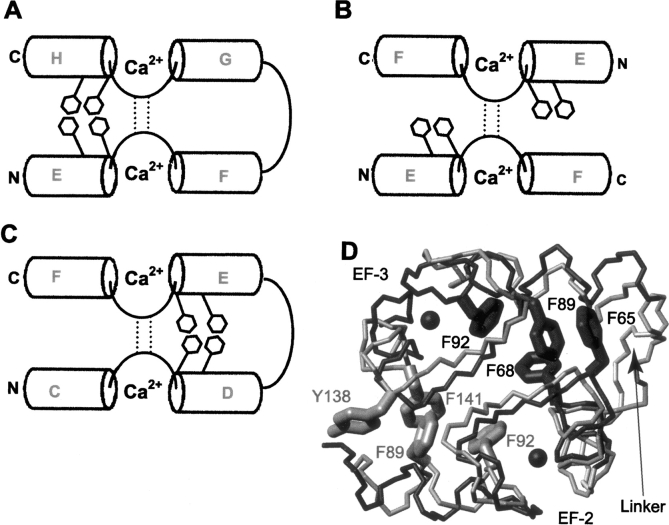Figure 7.
Schematic representations showing the relative positions of conserved aromatic residues and the inter-EF-hand loop in (A) the C-domain of CaM, (B) an EF-hand homodimer (such as TnC3), and (C) CaM2/3. Helices are cylinders and the aromatic residues involved in aromatic stacking interactions are represented as hexagons. In the CaM domain, the aromatic residues stack on each other opposite the loop between EF-hands, and may help position the EF-hands for high-affinity, cooperative Ca2+ binding. In the EF-hand homodimer, the aromatic stacking interactions cannot form, whereas with CaM2/3, the aromatic stacking interactions occur, but in a position adjacent to the loop between EF-hands. This may lead to low affinity for binding the second Ca2+ by these nonnative EF-hand domains. An EF-hand heterodimer would look like A, but without the loop between EF-hands. (D) The superimposition of CaM2/3 (dark gray) onto the C-domain of Ca2+-ligated CaM (light gray). The structures are arranged such that EF-3 and EF-4 of CaM are superimposed on EF-2 and EF-3 (labeled) of CaM2/3, respectively. As a result, the loop regions overlap, whereas the aromatic residues do not. The Ca2+ ions of CaM2/3 are black spheres.

